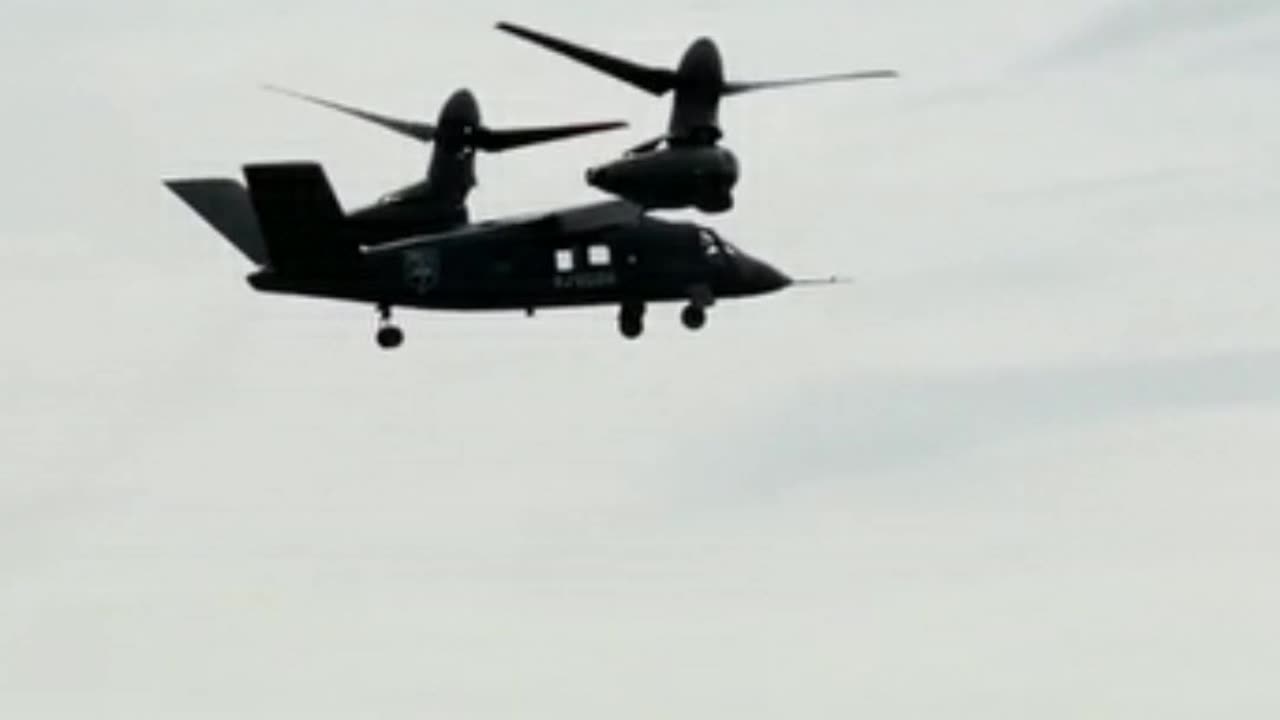Premium Only Content

Bell V-280 Valor - Next Generation Long Range Combat Helicopter
The Bell V-280 Valor is a tiltrotor aircraft being developed by Bell Helicopter for the United States Army's Future Vertical Lift (FVL) program. The aircraft was officially unveiled at the 2013 Army Aviation Association of America's (AAAA) Annual Professional Forum and Exposition in Fort Worth, Texas. The V-280 made its first flight on 18 December 2017 in Amarillo, Texas.
On 5 December 2022, the V-280 was chosen by the US Army as the winner of the Future Long-Range Assault Aircraft program to replace the Sikorsky UH-60 Black Hawk.
The V-280 is designed for a cruising speed of 280 knots (320 mph; 520 km/h), hence the name V-280. It has a top speed of 300 knots (345 mph; 556 km/h), a range of 2,100 nautical miles (2,400 mi; 3,900 km), and an effective combat range of 500 to 800 nmi (580 to 920 mi; 930 to 1,480 km). Expected maximum takeoff weight is around 30,000 pounds (14,000 kg).[49] In one major difference from the earlier V-22 Osprey tiltrotor, the engines remain in place while the rotors and drive shafts tilt. A driveshaft runs through the straight wing, allowing both prop rotors to be driven by a single engine in the event of engine loss. The V-280 will have retractable landing gear, a triple-redundant fly by wire control system, and a V-tail configuration.
The wings are made of a single section of carbon fiber reinforced polymer composite, reducing weight and production costs. The V-280 will have a crew of four and be capable of transporting up to 14 troops. Dual cargo hooks will give it a lift capacity to carry a 10,000 lb (4,500 kg) M777A2 Howitzer while flying at a speed of 150 knots (170 mph; 280 km/h). The fuselage is visually similar to that of the UH-60 Black Hawk medium lift helicopter. When landed, the wing is more than 7 ft (2.1 m) from the ground, allowing soldiers to egress easily out of two 6-foot (1.8 m) wide side doors and door gunners to have wide fields of fire.
Although the initial design is a utility configuration, Bell is also working on an attack configuration. Whether different variants of the V-280 would fill utility and attack roles or a single airframe could interchange payloads for either mission, Bell is confident the Valor tiltrotor platform can fulfill both duties. The U.S. Marine Corps is interested in having one aircraft to replace utility and attack helicopters, but the Army, which leads the program, is not committed to the idea and wants distinct platforms for each mission. Bell and Lockheed claim an AV-280 variant can launch rockets, missiles, and even small unmanned aerial vehicles forward or aft with no rotor interference, even in forward flight and cruise modes with the rotors forward.
The V-280 prototype (air vehicle concept demonstrator, or AVCD) was powered by the General Electric T64. The specific engine for the model performance specification (MPS) was unknown at the time, but has funding from the Army's future affordable turbine engine (FATE) program. The V-tail structure and ruddervators, made by GKN, will provide high levels of maneuverability and control to the airframe. It will be made of a combination of metals and composites. Features in the interior include seats that wirelessly charge troops’ radios, night-vision goggles, and other electronic gear and windows that display three-dimensional mission maps.
Special emphasis has been placed on reducing the weight of the V-280 in comparison to the V-22, which would reduce cost. To do this, composites are used extensively in the wing, fuselage, and tail. Wing skins and ribs are made of a honeycomb-stiffened "sandwich" construction with large-cell carbon cores for fewer, larger, and lighter parts. Skins and ribs are paste-bonded together to eliminate fasteners. With these measures, costs are reduced by over 30 percent compared to a scaled V-22 wing. Bell expects the V-280 to cost around the same as an AH-64E or MH-60M. While the Osprey has a higher disk loading and lower hover efficiency than a helicopter, the V-280 will have a lower disk loading and longer wing for greater hover and cruise efficiency.
In October 2021, Bell and Rolls-Royce jointly announced that the V-280 Valor powerplant would switch from the T64 turboshaft used on the prototype to a derivative of the Rolls-Royce T406/AE 1107C used on the Osprey, which would be named the AE 1107F. At the same time as increasing power from 5,000 to 7,000 horsepower, the AE 1107 is a known element in tiltrotor aircraft with its two decades of prior use, which lowers sustainment costs and decreases risks of the project.
source text : wikipedia.org
link : https://en.wikipedia.org/wiki/Bell_V-280_Valor
-
 LIVE
LIVE
Dr Disrespect
1 hour ago🔴LIVE - DR DISRESPECT - WARZONE - RANDOMLY GENERATED LOADOUTS EVENT
1,718 watching -
 1:01:03
1:01:03
Timcast
1 hour agoDemocrats SABOTAGE Texas REDISTRICTING, May Be CHARGED
44.3K47 -
 LIVE
LIVE
Sean Unpaved
44 minutes agoCowboys Chronicle: Jerry Jones, Micah Parsons, & the NFC East Battle
127 watching -
 LIVE
LIVE
The Charlie Kirk Show
1 hour agoTexas Dems In Flight + Recess Appointments Or Not? | Sen. Mullin, Halperin, Sen. Scott | 8.4.2025
4,248 watching -
 1:53:23
1:53:23
Tucker Carlson
9 minutes agoMargaret Roberts Exposes the True Story of the Oklahoma City Bombing and the Ongoing Cover-Up
-
 LIVE
LIVE
JuicyJohns
4 hours ago🟢#1 REBIRTH PLAYER 10.2+ KD🟢$500 GIVEAWAY SATURDAY!
100 watching -
 LIVE
LIVE
Neil McCoy-Ward
42 minutes agoVengeance: JD Vance Has A Bold Plan to FREE the UK & EU… (What We Know So Far)
123 watching -
 1:50:34
1:50:34
Steven Crowder
3 hours ago🔴 Texas Gerrymanders for Trump & Dems Freak: Racism or Good Politics?
217K155 -
 LIVE
LIVE
Flyover Conservatives
11 hours agoTwo Stories Shaking the Internet—Sydney Sweeney’s “Offensive” Ad & Forrest Frank’s Miraculous Healing | FOC Show
398 watching -
 LIVE
LIVE
The Mel K Show
1 hour agoMORNINGS WITH MEL K -Killing Operation Mockingbird: The Truth Has No Agenda 8-4-25
1,634 watching